As usual, I have taken this task of selecting my Top Reads List very seriously and really struggled to make sure the list commemorates my favorite books of the year. Simply put, sometimes this means splitting hairs and having to leave off books that I truly loved but which just didn’t quite have the lasting impact of others. This does not mean I didn’t enjoy those other books – I did! – but anytime you are making a list, some things make the cut and others do not. Rest assured, if I talked about your book here on BOLO Books, I am proud to have read your work and will continue to suggest it to folks for years to come. These are just the books I feel had the most resonance with me this year.
I will remind readers that this is my Top Reads list – not necessarily a Best Of list. Certainly these books are worthy of any Best Of list, but since I did not read everything published this year, I always hesitate to call it such and I questions any venue that proports to highlight the best as I am fairly sure no one had read all the crime fiction books published in 2021. So remember, this is just my completely subjective list of the Top Reads of those that I experienced this year.
I am proud once again that my Top Reads list reflects the vast diversity found in the crime fiction genre. My life has always been improved by allowing many different voices to guide my through life and these books show that anyone who thinks that quality diverse crime fiction is a passing trend will be sadly mistaken.
My final list is presented in alphabetical order based on the novel’s title – except for the first choice, which represents my overall favorite novel of the year. Along with the cover image for each selected book, I have included a short extract from the original review. Please follow the link following each extract to re-visit the full review and to find purchase links.
I can already hear you saying, enough with the babble, let’s see this list!
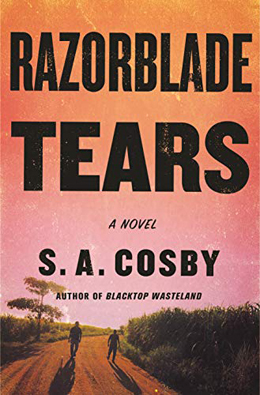
“With My Darkest Prayer, his debut novel, S. A. Cosby leapt onto the literary landscape of crime fiction by showing himself to be a true wordsmith dedicated to crafting exquisite sentences and revelatory metaphors. Cosby followed this up with his break-through novel, Blacktop Wasteland, which proved his ability to craft complex characters readers care about whilst throwing them into exciting and adventurous plotlines. Now with his third novel, Razorblade Tears, Cosby has written the masterpiece he was destined to produce – combining all these elements amidst a story that shows true empathy, compassion and understanding. Razorblade Tears is a novel that wears its heart on its sleeve and never pulls punches; because of that it manages to elicit honest reflection and genuine change from the reader.” (FULL REVIEW)
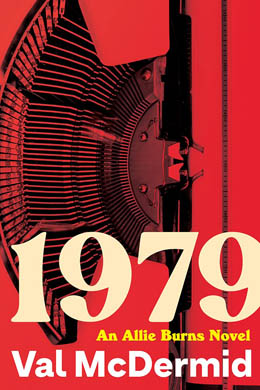
“While it is too early to know where this series will rank in the crime fiction canon, the quality of 1979 ensures that Val is taking this project extremely seriously and if the next books are even half as good as 1979, readers will be rewarded with some excellent high-quality novels for years to come. Get in at the ground floor and join the cult of readers who are going to consider Allie Burns a friend, a guide, and a prophet of the past.” (FULL REVIEW)
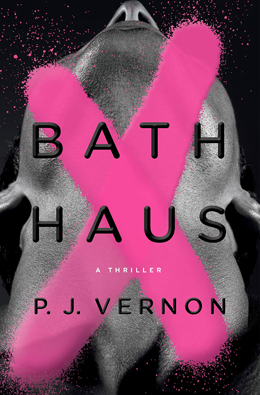
“It requires a unique talent to take what amounts to long-standing tropes of a particular genre then bend them ever so subtly in such a way whereas to end up with something that feels totally fresh and innovative, however that is exactly what P. J. Vernon has accomplished with Bath Haus – an Own Voices mystery that could be classified as DOMestic SUBspense, if that were not trying just a little too hard to be witty and clever.” (FULL REVIEW)
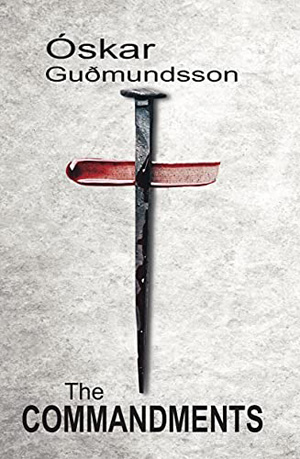
“Óskar Guðmundsson allows his story to unfold in natural order. By varying the chapter lengths and strategically placing the various investigative reveals, he lures his readers into reading long into the night. Like Alfred Hitchcock, Guðmundsson understands that anything he writes on the page would pale in comparison to the horrors created in the reader’s own imagination, so he provides just enough details to haunt the reader while keeping the worst offences off the printed page.” (FULL REVIEW)

“The success of historical fiction depends as much on what is not included as it does on what actually appears on the written page. If the reader is burdened with too many facts and details, the experience becomes too much like a textbook; and yet in order for the period to come alive for the reader there must be enough specifics and ambiance for the solid grounding of the narrative. This is an elusive demarcation that varies widely, but in Death at Greenway, Lori Rader-Day walks this tightrope with aplomb.” (FULL REVIEW)

“The plot of Gone for Good is incredibly well-constructed with red herrings and unexpected twists around every dark corner. Spoilers would be too challenging to avoid, so suffice to say Schaffhausen leads readers to a satisfying conclusion before springing on them still more labyrinthine revelations that truly shock. The rich tapestry that is in place once Gone for Good is complete signals that readers are in for a truly rewarding and wholly-original journey across this particular series of novels.” (FULL REVIEW)
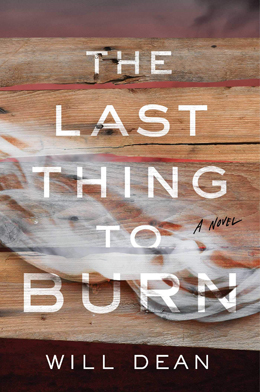
“The Last Thing to Burn works because Will Dean takes a very risky chance with the narrative – the reader spends the entire novel in Jane’s mind, seeing everything from her perspective. Many writers explore points-of-view tactics from a different gender and while making that feel authentic is often challenging, skilled authors make this look easy. In The Last Thing to Burn, however, Will Dean goes one step further, embodying the soul and mind of Jane in a way that is not often witnessed – even in cases where authors are writing POVs that match their gender. Not only does Dean do this himself, but he brings the reader along with him to such a level that Jane/Reader almost merge and it becomes like our very safety is at risk.” (FULL REVIEW)
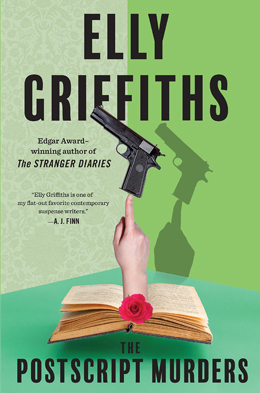
“DS Harbinder is an Indian Sikh lesbian who lives with her tradition-minded parents, to whom she has not yet come out of the closet. While we are in a period where readers must champion #ownvoices stories of diversity, it is nice to see some authors rise to the need for more diversity by stepping out of their comfort zone to craft fully-realized characters that celebrate people that are nothing like themselves. Respect and empathy are key here and Elly Griffiths has shown in these two novels that Harbinder Kaur is a character she is invested in and the risk pays off in dividends.” (FULL REVIEW)

“The Savage Kind fits squarely in the noir tradition, but as with Megan Abbott’s work, John Copenhaver helps to advance that sub-genre by placing young women at the center of the action. It would have been cliché to portray Philippa and Judy as one being naughty and the other nice, but this is an author who is more interested in the shades of grey between these two extremes. Both of these girls are outsiders – one who was adopted, the other with a stepmother – and they have scars that linger, both physical and emotional.” (FULL REVIEW)

“The plot of The Turnout will only work if the two sisters have distinct and recognizable personalities, but fortunately there is no crime writer working today who is better than Megan Abbott at crafting female characters who are both authentic and unique. As sisters, Dara and Marie, have many similarities which make their relationship one of grudgingly mutual respect; but where there are differences, they often manifest at opposite ends of the spectrum resulting in almost constant conflict. Navigating these two extremes is not unlike dancing a pas de deux at the elite level in front of a sell-out crowd at a storied ballet institution. (FULL REVIEW)
TOP READS – DEBUT NOVELS IN CRIME FICTION

“The Anatomy of Desire is presented as a transcript to a true crime documentary with the speaker of each monologue or statement clearly identified, followed by what that person actually had to say. These statements range in size from a mere sentence to longer diatribes. There are longer sections that transcribe what happens in the courtroom, but again only via the use of dialogue. Since it is immediately clear that the novel serves as the foundation for a fictional docuseries, readers are conscious of the fact that the writer/director Duncan McMillan is manipulating the proceedings by choosing what is revealed and when it is disclosed to the audience in order to elevate the tension in his finished product.” (FULL REVIEW)

“Arsenic and Adobo falls squarely into the cozy mystery tradition with all the beloved tropes and expectations that come along with that designation, however, the focus on Filipino culture brings a fresh, new perspective readers will not have seen before – especially in the crime fiction genre…Arsenic and Adobo is a fast and fun read, with a mystery that plays fair without being too obvious and just enough romantic tension to offset the murder.” (FULL REVIEW)
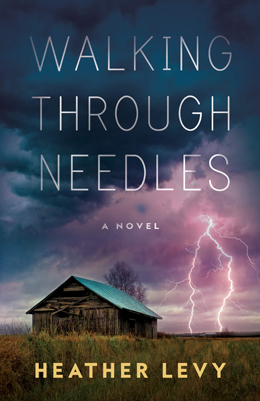
“The moment one begins reading Walking Through Needles, it is clear this is going to be a raw and unflinching journey – as emotional for the reader as it is for the characters within the story. Heather Levy’s authorial voice has an immediate, unapologetic, and erotic-tinged vibe that simultaneously lulls and lures any reader willing to give consent…In many ways, this seems like a book that only Heather Levy could have written. She is fearless in tackling a myriad of difficult themes and topics, but also brave enough to include some non-traditional sexual kinks – always managing to do both with compassion, understanding, and lack of judgement.” (FULL REVIEW)
TOP READS – YOUNG ADULT CRIME FICTION

Readers know that Courtney Summers isn’t going to take the easy path – nor even the predicted path – with her novels and The Project is no different. This is a difficult read in the sense that the scars, both literal and figurative, are very near the surface. Anyone who has ever wondered about how cults work and what types of people are susceptible to them will find much to explore in The Project; but trust me when I say that you may be surprised.” (FULL REVIEW)
TOP READS – UNCATEGORIZABLE “CRIME FICTION”

“Every so often a book comes along that is problematic to classify, difficult to summarize, and impossible to forget. The Last House on Needless Street by Catriona Ward is just such a novel. It has been called a thriller, horror, psychological suspense, crime fiction, and fantasy – it is all of those things and none of them. One thing for sure, it is most definitely a singular work that will resonate for decades to come; one of those that will be referenced by readers, scholars, authors and critics alike…When you must mark time as BN and AN (Before Needless and After Needless), you will understand that this book has altered your view of the world around us.” (FULL REVIEW)
